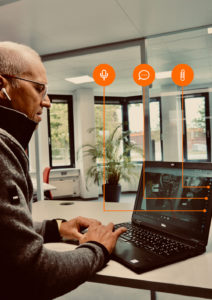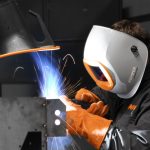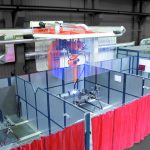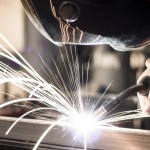Service extraction units with KEMPERvision: “The future of service is becoming more digital. Now.”
To make optimum use of extraction and filter units, effective service is more important than ever today. But, in times of contact restrictions, on-site visits are becoming increasingly difficult or even impossible. Is digitalisation the future for this reason alone, Mr. Schwabe? In the interview, the KEMPER service expert expresses his opinion.
He has been Head of After Sales & Services at KEMPER since 2019, having previously worked for many years in mechanical and plant engineering and therefore understands the needs of metalworking companies. They are concerned with the best possible availability of the extraction and filter systems as well as with optimum all-round support. Maintaining contact is a difficult task in these times of the Corona pandemic, but Thomas Schwabe is gradually developing service further.
Mr. Schwabe, you are responsible for service, but you are not allowed to have direct contact with your customers. How is that possible?
Admittedly, the current situation presents challenges for all of us, and especially for service. Service calls in metalworking companies are not always easily possible. We ourselves have also reduced direct contact both internally and externally. In consultation with our customers, however, we ensure the operation of our plants at all times, but this requires special precautions.
With KEMPERvision you are currently starting another service offer that is fully based on digitalisation. Is the concept a response to the contact restrictions?
Yes and no! We have been driving forward the digitalisation of all our divisions for some time now. Since last year, we have been participating in the PersonA scientific research project for the data protection-compliant use of digital assistance systems. In the present situation, the fact that we are now establishing the new offer based on augmented reality as a firm service offering is a fortunate circumstance. This means that, even in these difficult times, we are even more comprehensively at our customers’ side.
Augmented reality, that sounds like technology of the future…
…yes, to a certain extent. Especially in medium-sized companies, the use of AR in service is not yet really widespread. But we can see a number of additional benefits for us and our customers. And our customers will continue to get the most from these added values, even after the lifting of contact restrictions.
“And our customers will continue to get the most from these added values, even after the lifting of contact restrictions.”
Thomas Schwabe, Head offter Sales & Services, KEMPER GmbH
How exactly does the AR service work?
If a fault occurs in the suction and filter unit, it needs to be rectified. If the user requires further advice, we send the AR viewer to our customer. Inside Europe, it is typically on site within one to two working days. In this way, customers even benefit from advice from our experts faster than from a personal on-site appointment.
So what happens next?
The user puts on the viewer and connects it to the Internet. This is done via a mobile hotspot that we provide together with the viewer or via existing WLAN at the customer’s premises. The viewer is configured accordingly in advance at our headquarters in Vreden and the customer puts on the viewer and starts the application with voice-control and is connected to our service expert. The user then goes to the unit and discusses his problem directly with us. The images that the camera captures are displayed directly on the screen in Vreden. Either by voice communication, showing text messages, displaying further images or sharing technical information such as circuit diagrams or markings within the live images, we then instruct the users accordingly and together we determine a possible solution and assist with implementation.
 Will service calls only run digitally in future and will this then make service visits superfluous?
Will service calls only run digitally in future and will this then make service visits superfluous?
No, I don’t think so, but service will certainly become much more digital in future. For us, the use of AR technology is a further milestone in the digitalisation of our product range. Besides, personal service calls and, of course, coordination via other digital tools, such as video conferencing, chats or even e-mails, will continue to count. It’s our job, of course, to find the appropriate communication channel for each individual customer.
You spoke of added value. What exactly do you want to achieve with your AR concept?
Firstly, the shorter reaction times mentioned above. Secondly, the users learn to understand their units better by carrying out necessary work themselves according to instruction. All this promises significant gains in efficiency for the operating company and for us as well. And, because there are fewer on-site visits than in the past, we are also making the future of service more sustainable.






